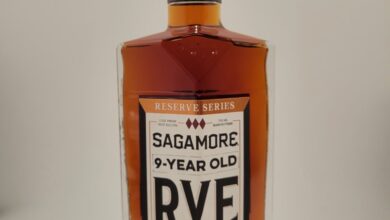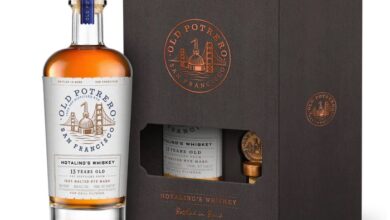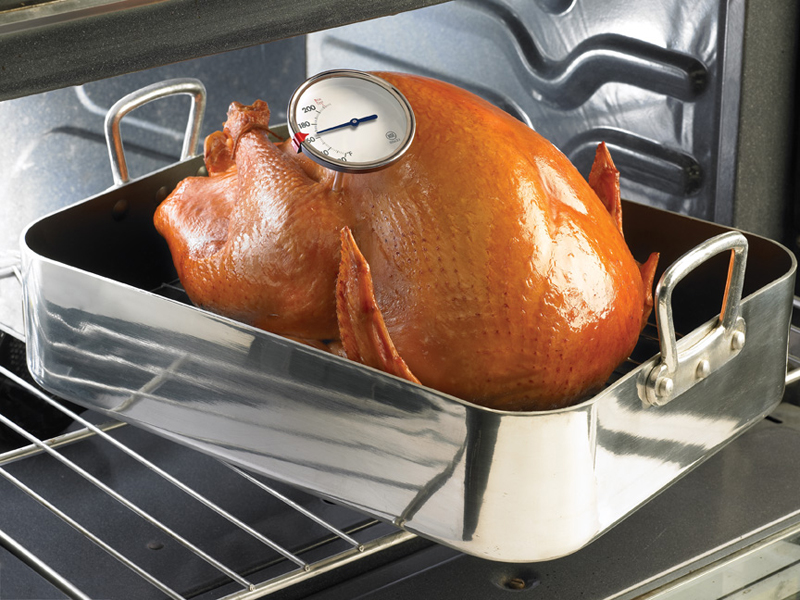Around The World With Six Whiskies
This World Whisky Day, Hoist A Dram That Takes You Places
By Richard Thomas

(Credit: Richard Thomas)
World Whisky Day falls on the third Saturday of May, so this 10th installment of the celebratory date will fall on May 15th for 2021. Although many will mark the occasion by hoisting a familiar go-to, I see these “drinks holidays” as a great excuse to break out of your familiar comfort zone, and none more so than one that has that word “world” in the title. In this particular instance, a key aspect of world whisky in the 21st Century is how whisky-making has become a truly internationalized, globalized phenomenon. In 1999, you could count the number of countries making whisky on two hands and have fingers leftover; now it is being done many times over on every continent, excepting Antarctica.
So, this World Whisky Day should be devoted to exploring the best whiskies from these newcomer countries, and I guarantee that at least one of the six examples below is something you haven’t had. I only managed to complete the circuit of all seven myself during the past year. Moreover, if you put a flight of four together from this list, you could literally go around the world with it.
Australia: Starward Two-Fold
One attractive element of Australia’s Starward whisky is how it breaks out of the mold adopted by almost all of the newcomer countries — indeed, individual distilleries — in world whisky. With few exceptions, they follow the Scottish single malt model: double distilled single malts. This is because hardly anyone outside the traditional big five territories of Canada, Ireland, Japan, Scotland and the US uses column stills or works with grain whiskies. In Two-Fold, Starward is making a whisky from malted barley and wheat (like a grain whisky) in pot stills (like a single malt). They then used an ample local resource, Australian red wine barrels, for maturation.
The result is a straight-forward, lovely drinking experience. The best part, though, could be the price: at $35 a bottle, most anyone can afford to just get a whole bottle and take it home for World Whisky Day.
France: Domaine des Hautes Glaces 100% Organic Rye
The world’s largest whisky market is also tied for first place as a producer: the United States. Yet the second-largest whisky market, France, isn’t even one of the big five traditional producers. Even so, that love of whisky expressed itself in France in whisky-making long before so many other countries joined the club in recent years. Distilling whisky goes back decades there, but it is in recent times that the French have become more experimental.

(Credit: Amrut)
So it is that France also produces a whisky that breaks the Scots model, in the form of Domaine des Hautes Glaces 100% Organic Rye. At $90, it’s not a cheap buy, and production is small enough that you’ll only find it in bars with the widest and deepest of inventories. Still, if you can find it, what better way to mark what world whisky really means with a 100% rye whiskey from France?
India: Amrut Peated Single Malt
If you track whisky drinking by volume rather than value, and adopt a very loose definition of what whisky is, the leading market changes from the United States to India; it’s a country with roughly four times the population, and a great many of them love a good dram.
The problem there is that a lot of what gets bottled as whisky in India wouldn’t be called that anywhere else, except maybe Japan (which only recently began implementing enforceable whisky laws). Much of what is on the Indian market takes what the rest of us call whisky and blends it with a spirit similar to rum. As India’s economy has grown, so has a crop of distillers introduced in producing proper single malt whiskies; one such example is Amrut.
Amrut makes its whiskies in Bangalore, one of India’s leading cities. The thing is that whereas there are places in India where the climate is milder and more like what is found in Japan, Ireland or Scotland, Bangalore is in the hot and steamy South. Amrut has tailored its production process accordingly, but even so it still makes whiskies traditionalists will appreciate, like Amrut Peated. The price point is competitive with many of the peaty whiskies one might buy too, at $70 a bottle.
Israel: Milk & Honey Classic Single Malt
Of course, it follows that if one is going to have a whisky from the Middle East, it would need to come from Israel. No Muslim country is going to be in the business of distilled spirits. Even so, it had to wait until recent years for someone to step into this regional void, with Milk & Honey becoming Israel’s first whisky distiller. M&H Classic is a good start for this new distillery in a newcomer country, combining a vanilla and honey sweetness with light touch of oaky spiciness. For an item so exotic, the price point is a fair one, at $55 a bottle.

(Credit: Abasolo)
Mexico: Abasolo Corn Whiskey
While American produces literal mountains of corn, it is Mexico is that is truly synonymous with the crop, with almost 60 native varietals to its name. It follows that if Mexico were going to get into whiskey making, it would draw on that agricultural heritage and make a corn whiskey. That is exactly where Destilería y Bodega Abasolo chose to go. The corn chosen is a Mexican varietal, Cacahuazintle, and it is milled and mashed in the same manner as the masa used to make tortillas. This very localized process has created a whiskey that is fruity, rather than buttery or grassy in the way that American corn whiskeys have been.
Here you have a bottle you can pick up for World Whisky Day and then trot out again for Cinco de Mayo or when Canelo Alvarez fights, and it will only cost you $40. Is there any real excuse not to try it?
Sweden: Mackmyra 10 Year Old
Mackmyra was a much heralded trailblazer in world whisky, but it wasn’t until 2017 that they finally released an age statement single malt in those Ikea-reminiscent bottles of theirs. It’s fruity, balanced and sophisticated, especially for a 10 year old malt, but there is a problem: although still readily available in Europe, Mackmyra 10 is a rare find indeed in the United States. So while you would pay about €55 to 60 in Europe, I cannot confirm if any liquor store in the US actually has a bottle. Your best bet to find this item would therefore be one of the country’s top whisky bars. Other Mackmyra releases are around, to be sure, but in my mind this is the one to hunt for on World Whisky Day.



